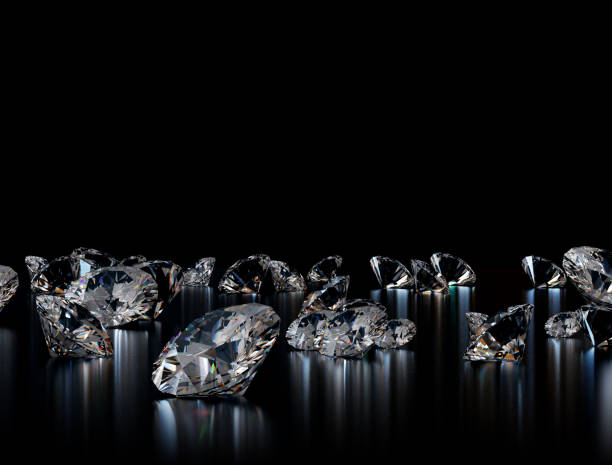When it comes to purchasing a lab diamond ring, one of the most important decisions is the choice of metal for the band. Platinum and gold are two of the most popular options, each offering distinct advantages and characteristics. Understanding the differences between platinum and gold can help you choose the best metal for your lab diamond ring. Whether you’re looking for durability, style, or budget considerations, comparing platinum and gold will allow you to make a more informed decision.
Understanding Lab Diamond Rings and Their Appeal
Lab diamond rings have gained immense popularity in recent years due to their ethical sourcing and cost-effectiveness. Unlike natural diamonds, which are mined from the Earth, lab diamonds are created in a controlled environment using advanced technology. The result is a diamond that is chemically, physically, and optically identical to a mined diamond, yet without the environmental and ethical concerns associated with traditional diamond mining. When choosing a lab diamond, the next key decision is selecting the perfect metal to complement the stone. lab diamond rings platinum vs gold are both beautiful options, but each has its own unique qualities that can affect the overall look and feel of your lab diamond ring.
Platinum: The Premium Choice for Durability and Shine
Platinum is a popular choice for engagement rings and wedding bands, especially when paired with a lab diamond. One of the key reasons why platinum is often preferred is its exceptional durability. Platinum is a naturally dense and strong metal, making it more resistant to scratches and wear than gold. This makes platinum an ideal option for those looking for a metal that will stand the test of time and maintain its appearance for many years. Additionally, platinum has a natural white sheen that enhances the brilliance of a lab diamond, making it an excellent choice for showcasing the stone’s sparkle and clarity.
Another advantage of platinum is its hypoallergenic properties. For individuals with sensitive skin or allergies, platinum offers a safe and comfortable option, as it is less likely to cause irritation compared to other metals. Platinum’s weight and density also contribute to a luxurious, substantial feel that many people love in their jewelry. However, platinum’s strength can make it more challenging to resize, so it is important to ensure that you select the correct size before purchasing.
Gold: A Classic Choice for Style and Versatility
Gold has long been a favorite choice for engagement rings and wedding bands, and it pairs beautifully with lab diamonds as well. Gold is available in several different colors, including yellow, white, and rose, offering a wide range of options to suit various personal styles. Yellow gold has a warm, classic look, while white gold offers a sleek, modern aesthetic. Rose gold, with its romantic pink hue, is increasingly popular for those looking for something unique and trendy. No matter which color you choose, gold is a versatile and timeless option for a lab diamond ring.
In terms of durability, gold is not as strong as platinum, but it is still a very resilient metal. Gold’s softness makes it easier to shape and customize, which is why many jewelers offer intricate designs and settings with gold bands. Over time, gold can show signs of wear, such as slight scratching, but many people find that this adds to the character of the ring. Additionally, gold can be easily resized, which is an important consideration for those who may need adjustments in the future.
Cost Considerations: Platinum vs Gold for Lab Diamond Rings
When it comes to the cost of a lab diamond ring, the metal you choose can significantly impact the price. Platinum is generally more expensive than gold due to its rarity, density, and durability. The cost of platinum is usually higher because it requires more material to create a band, and the metal’s strength means that jewelers use a thicker band compared to gold. However, despite its higher initial cost, platinum’s durability can make it a more cost-effective choice in the long run, as it is less likely to need repairs or refinishing over time.
Gold, on the other hand, is typically more affordable than platinum, making it a more budget-friendly option for those who are looking for a beautiful lab diamond ring without breaking the bank. While gold may not be as durable as platinum, it still provides an elegant look and can last for many years with proper care. For those on a tighter budget or those who prefer a different aesthetic, gold offers a great alternative to platinum while still providing a high-quality and beautiful band for a lab diamond ring.
Durability: How Platinum and Gold Compare
In terms of durability, platinum outshines gold in many ways. Platinum is a much harder and more durable metal, which means it is less prone to scratching and damage over time. If you’re looking for a metal that will keep its appearance for many years with minimal maintenance, platinum is the best choice. However, platinum can develop a “patina” over time, which is a natural dulling of the surface that some people love for its vintage look. This patina can be polished out if you prefer a shiny finish, but it is important to note that platinum’s appearance can change over time.
Gold, while not as durable as platinum, is still a strong and reliable metal. However, it is more susceptible to scratches and wear lab created diamonds, especially in softer colors like yellow gold. To keep gold looking its best, regular maintenance and polishing may be required to maintain its shine. If you are looking for a metal that will resist scratching and retain its original appearance for years to come, platinum is the superior choice, but if you don’t mind the natural aging of gold, it can still be a great option.
Choosing the Right Metal for Your Lab Diamond Ring
Ultimately, the decision between platinum and gold for your lab diamond ring comes down to personal preference, style, and budget. Platinum offers unmatched durability and a luxurious feel, making it perfect for those who want a long-lasting, timeless ring. On the other hand, gold offers a more affordable and versatile option, with the ability to choose from various colors to suit your style. Both metals are beautiful choices for a lab diamond ring, and each has its own unique advantages.
Whether you opt for platinum or gold, a lab diamond ring will give you a beautiful, ethical, and sustainable option for your engagement or wedding band. By understanding the key differences between these two metals, you can make an informed decision that will result in a stunning piece of jewelry that reflects your unique personality and style.






More Stories
The Rise of Better Lab Grown Diamonds: A Revolution in the Jewelry Industry
Exploring Laboratory Diamonds in Barcelona: A Sustainable and Ethical Choice for Fine Jewelry
HPHT vs CVD: Understanding the Difference in Lab Diamonds